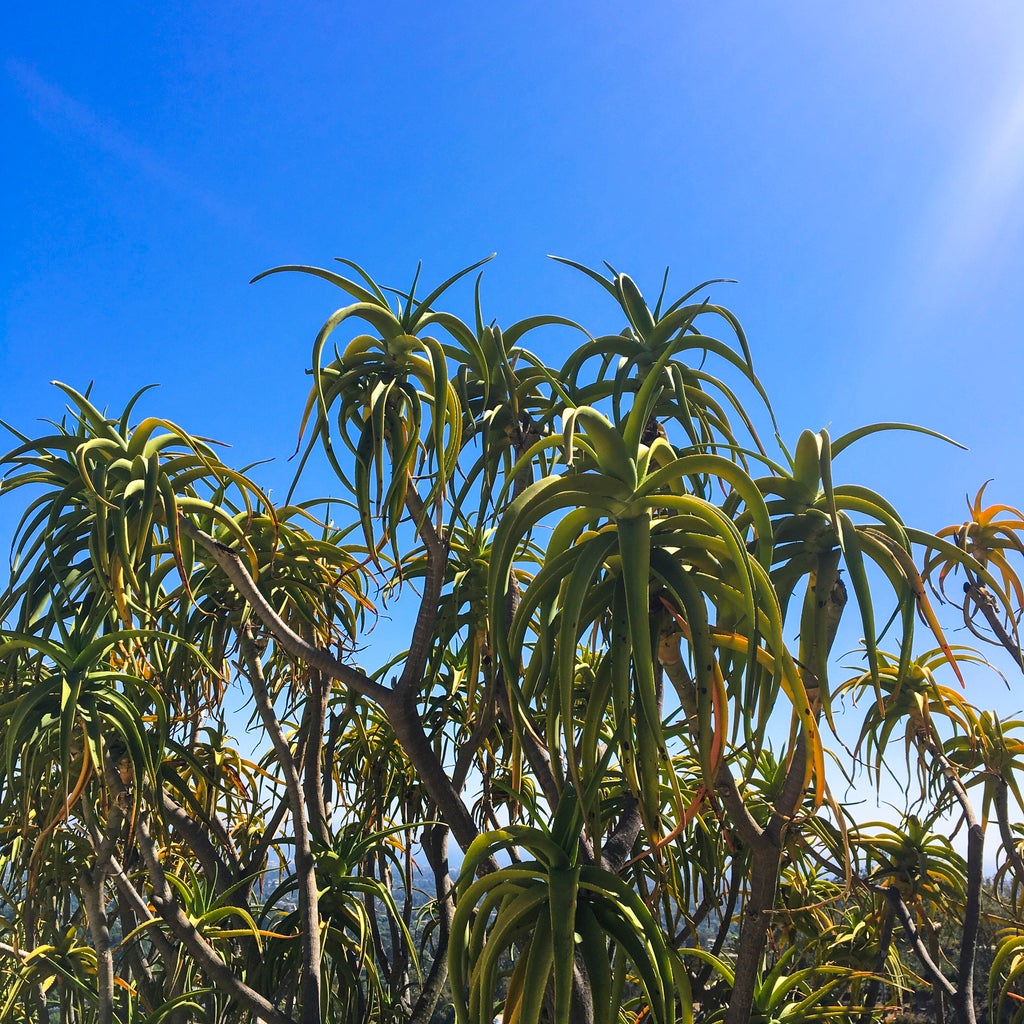Tree Aloe Info: Learn About Growing A Tree Aloe


Growing a tree aloe isn’t difficult if you live in a warm climate. The tree can tolerate temperatures as chilly as 22 degrees F. (-6 C.) for short periods of time, although the cold may discolor the foliage. Are you interested in growing this impressive carefree plant? Read on for more tree aloe information.
Tree Aloe Info
What is a tree aloe? Native to South Africa, tree aloe (Aloe bainesii) is a large tree-like succulent and aloe plant relative with mottled gray stems and rosettes of greenish gray leaves. Butterflies and hummingbirds are attracted to the clusters of spiky, tube-shaped blooms that show up in winter.
Tree aloe is a moderately fast growing tree, gaining about 12 inches (31 cm.) per year. Allow plenty of space when growing tree aloe, as this lovely evergreen reaches mature heights of 20 to 30 feet (7-10 m.) and widths of 10 to 20 feet (3-7 m.).
Young tree aloes do well in pots, but be sure the container is sturdy and wide enough to accommodate the tree’s thick base.
Tree Aloe Care
Tree aloes require well-drained soil. Like most succulents, tree aloe is likely to rot in mud. Fungal diseases are also common for trees grown in excessively wet conditions. Plant tree aloe where the plant is exposed to full or partial sunlight.
Once established, tree aloes are drought tolerant and should be irrigated only occasionally, primarily during hot, dry periods. Water deeply, then allow the soil to dry before watering again. Rainfall usually provides enough moisture for tree aloe during the winter months. If the winter is dry, water very sparingly.
Tree aloes generally require no fertilizer. If you think it necessary, provide a light application of a balanced, general purpose fertilizer in spring.
Gardening tips, videos, info and more delivered right to your inbox!
Sign up for the Gardening Know How newsletter today and receive a free copy of our e-book "How to Grow Delicious Tomatoes".
Wear gloves when handling tree aloe, as the sap may be irritating to the skin.

A Credentialed Garden Writer, Mary H. Dyer was with Gardening Know How in the very beginning, publishing articles as early as 2007.
-
 My Homemade Orchid Fertilizer Always Brings More Blooms – Here's The Easy Recipe That Transforms Plants
My Homemade Orchid Fertilizer Always Brings More Blooms – Here's The Easy Recipe That Transforms PlantsScientist-turned-gardener Mary Ellen Ellis shares her tried-and-tested DIY orchid fertilizer recipe, plus more ingredients to try for healthy, happy plants.
By Mary Ellen Ellis
-
 Looking For Plants To Give You The Soft And Fuzzies? Try These 5 Fuzzy Leaf Plant Options
Looking For Plants To Give You The Soft And Fuzzies? Try These 5 Fuzzy Leaf Plant OptionsLovers of texture, drama, silver foliage and tactile plants will adore these special sensory garden additions. These fuzzy leaf plant options will leave you all aglow
By Susan Albert